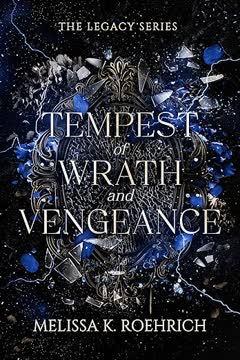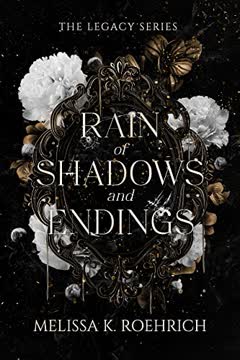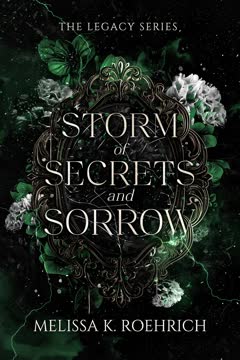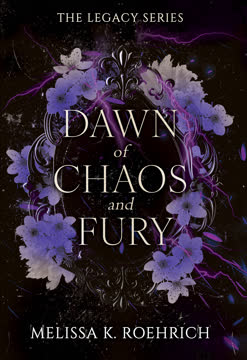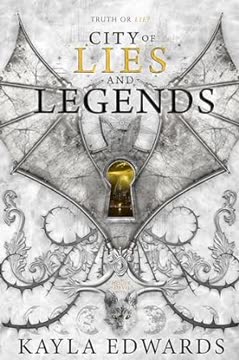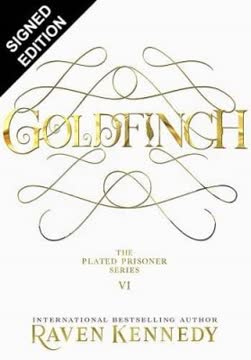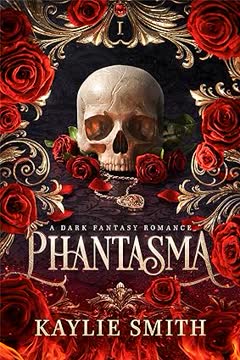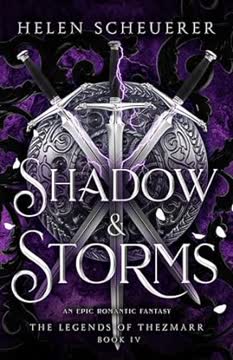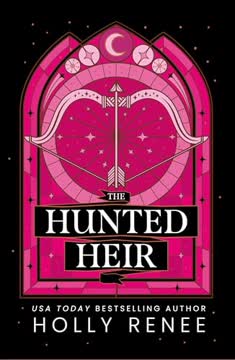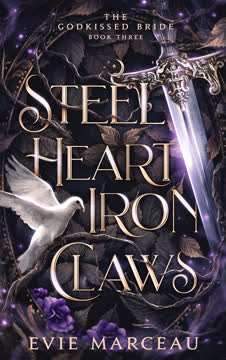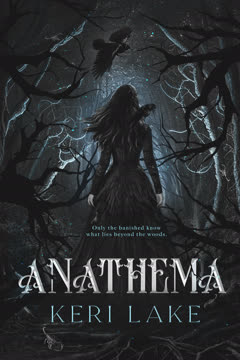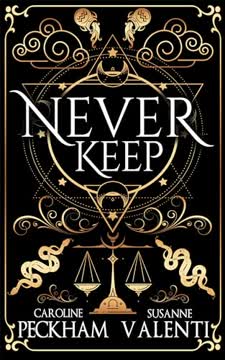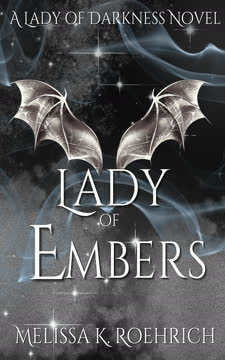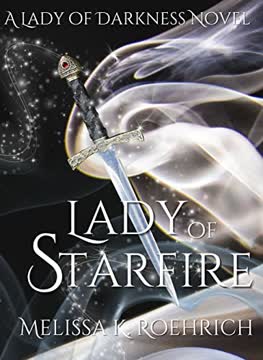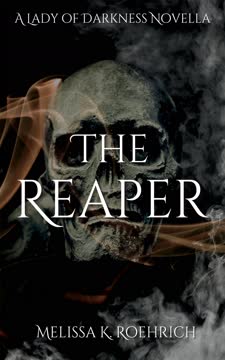Plot Summary
1. Storms and Shattered Bonds
Tessa's power spirals out of control. After the events of the previous book, Tessa is separated from Theon and Luka, her two bonded, and forced into the Achaz Kingdom under Lord Rordan's watch. Her magic, wild and untamed, is both a weapon and a curse. The bonds between Tessa, Theon, and Luka are strained by secrets, betrayals, and the manipulations of those around them. Tessa's struggle to control her power mirrors her struggle to trust anyone, as she is used as a pawn in the political games of Devram's rulers. The storm inside her is mirrored by the literal storms she conjures, and the threat of prophecy looms over all.
2. The Tribunal's Deadly Bargain
Political machinations threaten Tessa's fate. The Tribunal, composed of the six ruling Lords and Ladies, debates Tessa's lineage and the threat she poses. Rordan, seeking to consolidate power, pushes for Tessa to be matched with an Achaz Legacy, Liam, while Theon is pressured to move on with his own Match contract. The Tribunal's decisions are less about justice and more about maintaining the fragile balance of power. Tessa is forced to wear bands and a ring that suppress her magic, symbolizing her loss of agency. The Tribunal's bargains set the stage for the coming chaos, as Tessa's destiny is manipulated by those who fear her.
3. Wolves, Hunters, and Betrayal
Tessa faces attacks and shifting allegiances. Tessa is repeatedly targeted by the Augury, a secretive group bent on fulfilling a prophecy that would end Devram. She is betrayed by those she once trusted, including Dex and Oralia, who are revealed to be "light guardians" with their own agenda. Her wolves, Roan and Nylah, become her only steadfast companions, but even they are endangered by her enemies. The Hunters—supernatural assassins—are summoned by Tessa's blood, but their loyalty is to Achaz, not her. The lines between friend and foe blur, and Tessa's isolation deepens.
4. The Price of Power
Magic, blood, and the cost of survival. Tessa's power is both a blessing and a curse. She learns that her magic is a unique blend of the most powerful bloodlines: Achaz, Arius, Serafina, and Zinta. This makes her a being of beginnings and endings, light and dark, and the embodiment of chaos. Her power grows stronger the more she uses it, but it also makes her a target for those who wish to control or destroy her. The cost of wielding such power is steep—she is forced to make impossible choices, sacrifice her own happiness, and become the very monster she fears.
5. Bloodlines and Broken Trust
Secrets unravel, and trust is shattered. The true nature of Tessa's lineage is revealed through visions, prophecies, and the confessions of those around her. Luka discovers his own heritage as a grandchild of Sargon, making him a dragon shifter and a natural Guardian. Theon's family is torn apart by betrayal, with his mother Cressida revealed as a leader of the Augury. Tessa's trust in Luka is broken when he learns she kept the secret of his father's imprisonment. The bonds between the main characters are tested to their limits, and the cost of secrets becomes clear.
6. The Fates Demand Sacrifice
Prophecy and destiny force hard choices. The Revelation Decree—a prophecy that a being like Tessa will bring about the end of Devram—drives the actions of the rulers and the Augury. The Fates, cosmic arbiters of balance, are closing in. Tessa is forced to confront the reality that her existence is an imbalance that must be corrected. Theon, realizing that saving Tessa means dooming Devram, makes the impossible choice to sacrifice his world for her freedom. Luka's loyalty is tested as he must choose between his Guardian duty and his love for Tessa.
7. The Sirana Gala's Deceit
A night of politics, betrayal, and heartbreak. At the Sirana Gala, Rordan announces Tessa's Match contract with Liam, blindsiding her and Theon. The event is a showcase of the realm's decadence and the rulers' willingness to use their Sources as political pawns. Tessa and Theon share a stolen moment, but the night ends with Tessa feeling more alone than ever. The Gala marks the point of no return, as alliances fracture and the rulers' true intentions are revealed.
8. Theon's Impossible Choice
Theon chooses love over duty. Faced with the inevitability of Tessa's destruction at the hands of the Fates, Theon decides to save her by sacrificing Devram. He arranges for Tessa to be taken to another world, away from the reach of the Fates, even though it means his own death and the end of his kingdom. Theon's choice is both selfish and selfless, an act of love that defies prophecy but dooms his people. His final moments with Tessa are bittersweet, as he urges her to find happiness and freedom.
9. Luka's Loyalty Tested
Luka's identity and devotion are challenged. Luka's journey is one of self-discovery and painful choices. He learns of his true parentage and meets his long-lost brother, Razik. His loyalty to Theon is pitted against his love for Tessa, and he is forced to confront the ways he has been used and betrayed. When Tessa's secret about his father is revealed, Luka's trust in her is shattered. Ultimately, he must decide whether to follow Theon's final order and protect Tessa, or to walk away from the only home he's ever known.
10. The Genesis of Chaos
A new beginning born from destruction. The concept of "genesis" recurs throughout the story, symbolizing both creation and annihilation. Tessa's existence is a genesis—a new beginning that upends the established order. The freeing of Luka's father, Xan, and the revelation of the dragocen bond (a primordial, inevitable connection) between Razik and Eliza, signal the start of a new era. The old systems of power are collapsing, and the survivors must forge a new path in the aftermath of chaos.
11. The Augury's Final Move
The last gambit to fulfill prophecy. The Augury, led by Cressida and Mother Cordelia, orchestrate a final attack on Tessa at the Wynfell River. They summon the Hunters and Night Children, unleashing devastation on Arius Kingdom. Tessa, Theon, and their allies fight desperately, but are overwhelmed. Auryon, Tessa's Huntress protector, is killed. Theon and Tessa are both gravely wounded, and Luka arrives too late. The Augury's actions set in motion the endgame of the prophecy.
12. Monsters, Villains, and Love
Redefining heroism and villainy. The characters grapple with their own darkness and the roles they have been forced to play. Tessa embraces her identity as a monster and a villain, but also learns that love and acceptance can exist even in the darkest places. The relationships between Tessa, Theon, and Luka are complex, marked by pain, betrayal, and forgiveness. The story challenges the idea of what it means to be a hero or a villain, suggesting that everyone is capable of both.
13. The Collapse of Devram
The world falls to chaos. As the Fates close in, the rulers of Devram turn on each other. The Tribunal is paralyzed by infighting, and the fragile alliances between kingdoms shatter. The Night Children, led by Bree, rise in the Underground, threatening to seize power in the chaos. Theon's decision to save Tessa triggers the destruction of Devram, as the Fates unleash their wrath on a world that has failed to correct its imbalance. The survivors are left to pick up the pieces in a world forever changed.
14. The Fury of Akira
The origin of chaos is revealed. In a parallel narrative, Akira—Tessa's mother and the daughter of Achaz and Gehenna—is revealed as the original Fury, a being created from chaos and vengeance. Akira's story mirrors Tessa's, as she is caged and manipulated by the gods, but ultimately becomes a force of uncontrollable power. The cycle of creation and destruction is laid bare, and the true nature of chaos is revealed: it cannot be controlled, only accepted.
15. The End of Innocence
No one is untouched by darkness. The events of the book strip away any remaining innocence from the characters. Tessa is forced to kill, betray, and sacrifice those she loves. Theon and Luka must accept the consequences of their choices. Katya and Axel, now exiled to the Underground, struggle to build a new life as outcasts. The Fae, once hopeful for freedom, are caught in the crossfire of powers beyond their understanding. The end of innocence is both a tragedy and a necessary step toward growth.
16. The Underground's Rising
A new power emerges from the shadows. With the kingdoms in disarray, Bree and the Night Children seize the opportunity to rise. Axel, now a full Night Child, claims his place as a leader in the Underground, determined to protect Katya and their unborn child. The old hierarchies are upended, and the future of Devram is uncertain. The Underground becomes a crucible for new alliances and new forms of power, as the survivors adapt to a world without the old rules.
17. The Legacy of Vengeance
The cycle of revenge and redemption. Vengeance is a driving force for many characters—Tessa, Eviana, Bree, and even the gods themselves. But the story also explores the possibility of redemption. Tessa's journey is one of learning to forgive herself and accept love, even as she is forced to become the instrument of vengeance for others. The legacy of vengeance is both a burden and a source of strength, shaping the destinies of all who bear it.
18. Chaos Does Not Choose
The meaning of chaos and choice. In the end, the story returns to the theme of chaos—not as mindless destruction, but as the force that makes choice possible. Tessa, Akira, and the other survivors are not defined by fate or prophecy, but by the choices they make in the face of chaos. The book closes with the reminder that chaos does not choose; it is the choices of individuals that shape the world. The future is uncertain, but hope endures in the possibility of new beginnings.
Characters
Tessa (Tessalyn Ausra)
Wild, powerful, and conflicted heroine. Tessa is the central figure of the story, a young woman whose magic is the product of the most powerful bloodlines in the universe. She is both light and dark, beginnings and endings, and the embodiment of chaos. Tessa's journey is one of self-discovery, as she struggles to control her power, navigate the manipulations of those around her, and decide whether to embrace her role as a destroyer or to fight for her own freedom. Her relationships with Theon and Luka are fraught with pain, love, and betrayal, and her greatest fear is that she is unworthy of love. Tessa's arc is a meditation on agency, trauma, and the possibility of redemption.
Theon St. Orcas
Haunted, ambitious, and self-sacrificing Lord. Theon is the acting Lord of the Arius Kingdom, raised in a brutal environment by a father who valued power above all. He is fiercely intelligent, strategic, and driven by a need to protect those he loves—even at great personal cost. Theon's love for Tessa is both his greatest strength and his undoing, as he ultimately chooses to sacrifice his world for her freedom. His relationship with Luka is one of brotherhood and rivalry, and his journey is about learning to let go of control and accept vulnerability.
Luka Mors
Loyal, brooding, and searching for belonging. Luka is Theon's Guardian and best friend, but also a dragon shifter and the grandchild of Sargon. He is defined by his loyalty—to Theon, to Tessa, and to the idea of home. Luka's struggle is one of identity, as he learns the truth about his heritage and is forced to choose between duty and love. His relationship with Tessa is slow-burning and deeply emotional, marked by mutual respect and the pain of betrayal. Luka's arc is about finding his own worth and accepting that he, too, deserves love.
Axel St. Orcas
Restless, charming, and tragic. Axel is Theon's younger brother, the "spare heir" who never quite fit in. His journey takes him from the heights of privilege to the depths of the Underground, where he is transformed into a Night Child (vampyre). Axel's love for Katya and his struggle to protect her and their unborn child are central to his arc. He is forced to confront the darkness within himself and to redefine what it means to be a protector. Axel's story is one of loss, adaptation, and the search for a new purpose.
Katya
Resilient, intelligent, and quietly powerful. Katya is a fire Fae and Axel's twin flame. She is marked by her determination to survive and her willingness to sacrifice for those she loves. Katya's journey is one of learning to claim her own agency, even as she is caught between the machinations of the Legacy and the dangers of the Underground. Her relationship with Axel is a source of both pain and hope, and her pregnancy becomes a symbol of new beginnings in a world on the brink of collapse.
Rordan Jove
Manipulative, calculating, and enigmatic Lord. Rordan is the Lord of the Achaz Kingdom and the architect of many of the book's political machinations. He seeks to control Tessa and use her power to secure his own legacy. Rordan's true motives are often hidden, and he is both a mentor and a jailer to Tessa. His actions set in motion many of the events that lead to the collapse of Devram, and his relationship with Tessa is a study in the abuse of power.
Cressida St. Orcas
Deceptive, ambitious, and ruthless matriarch. Cressida is Theon and Axel's mother and a secret leader of the Augury. She presents herself as a passive noblewoman, but is revealed to be a master manipulator with her own agenda. Cressida's betrayal is a turning point in the story, shattering Theon's trust and setting the stage for the final conflict. She embodies the theme that evil often wears a familiar face.
Eviana
Broken, cunning, and vengeful Source. Eviana is Valter's Source, a woman who has survived decades of abuse and manipulation. She is both a victim and a perpetrator, forced to commit atrocities to survive. Eviana's arc is one of slow-burning vengeance, as she waits for the moment to turn on her captors and claim her own freedom. Her relationship with Tessa is complex, marked by mutual recognition of their shared trauma.
Razik Greybane
Aloof, knowledgeable, and reluctant brother. Razik is Luka's long-lost brother, a dragon shifter from another world. He is marked by his detachment and his deep bond with Eliza, his twin flame. Razik's knowledge of magic, prophecy, and the workings of the multiverse make him a valuable ally, but his reluctance to form attachments is a source of tension. His arc is about learning to accept family and the responsibilities that come with power.
Eliza
Fierce, passionate, and loyal. Eliza is a fire Fae and Razik's twin flame. She is a warrior, unafraid to speak her mind or to fight for what she believes in. Eliza's relationship with Razik is a model of partnership and mutual respect, and her presence challenges the norms of Devram's society. She is a catalyst for change, pushing others to question the status quo and to fight for a better world.
Plot Devices
Prophecy and the Revelation Decree
Prophecy as both curse and motivator. The Revelation Decree is the central prophecy that drives the plot, foretelling the destruction of Devram by a being like Tessa. The prophecy is used by the rulers to justify their actions, by the Augury to pursue Tessa, and by Tessa herself as a source of existential dread. The story uses prophecy to explore questions of fate, free will, and the cost of trying to control the un
Last updated:
FAQ
Q&A with the Author
Q: What inspired you to write this story?
A: The inspiration for this story came from a desire to explore themes of power, choice, and the consequences of our actions. I wanted to create a world where magic had a cost, where characters faced impossible decisions, and where the line between good and evil was constantly blurred. Tessa's character, in particular, was born out of a fascination with the idea of a person who embodies both creation and destruction, and how such a person would navigate a world that seeks to control her.
Q: Can you tell us more about the magic system in your world?
A: The magic system in this world is based on the concept of energy manipulation. Every living being has an internal well of magic, but some, like Tessa, have access to much more power than others. The use of magic always comes with a price, whether it's physical exhaustion, emotional toll, or in some cases, a literal blood price.
There are different types of magic users:
- Sources, like Tessa and Eviana, who have vast reserves of power
- Conduits, who can channel and direct magical energy
- Shifters, like Luka and Razik, who can transform into animal forms
- Elementals, who control specific aspects of nature
The magic is also tied to the concept of bond magic, where certain individuals are magically connected, enhancing their powers when together but also creating vulnerabilities.
Q: Who was your favorite character to write and why?
A: While I love all my characters, I found Axel particularly compelling to write. His journey from a somewhat carefree noble to a creature of the night, struggling with his new nature and fighting to protect Katya and their child, was full of emotional depth. Axel's transformation allowed me to explore themes of identity, sacrifice, and what it truly means to be human. His story arc also provided a unique perspective on the larger conflicts in the world, as he navigated both the upper echelons of society and the dangerous underworld.
Q: The relationship between Tessa, Theon, and Luka is complex. Can you elaborate on how you developed this dynamic?
A: The triangle between Tessa, Theon, and Luka is central to the story, and I wanted to create a dynamic that went beyond a simple love triangle. Each relationship brings out different aspects of the characters:
- Tessa and Theon have an intense, almost destructive passion. Their connection is immediate and powerful, but it's also fraught with the weight of prophecy and the expectations placed upon them.
- Tessa and Luka develop a slower, deeper bond based on mutual understanding and shared experiences. Their relationship grows from friendship into something more profound.
- Theon and Luka have a long history of friendship and loyalty, complicated by their duties and the secrets between them.
As the story progresses, these relationships evolve and intertwine, forcing each character to confront their true feelings and make difficult choices. The dynamic allowed me to explore different types of love, the nature of loyalty, and how relationships can both strengthen and challenge us.
Q: The world of Devram is quite complex. How did you approach world-building?
A: World-building for Devram was an intricate process. I started with the basic concept of a world where magic and politics are deeply intertwined, and then built outwards from there. Some key aspects I focused on:
-
History: I created a rich backstory for Devram, including ancient conflicts, the rise of the current power structures, and the origins of key magical elements.
-
Political System: The division into kingdoms, each ruled by a Lord, with the overarching influence of the Legacy, was designed to create a complex web of power dynamics and potential for political intrigue and betrayal.
-
Magic: As mentioned earlier, the magic system was carefully crafted to have clear rules and limitations, with different types of magic users and the concept of bond magic.
-
Culture: I developed distinct cultures for different regions and groups within Devram, including customs, beliefs, and social norms.
-
Geography: The physical layout of Devram, including the placement of kingdoms, natural barriers, and magical locations, was mapped out to influence travel, conflicts, and strategic elements of the plot.
-
Prophecy: The Revelation Decree and other prophetic elements were woven into the world's mythology to drive certain aspects of the plot and character motivations.
Throughout the world-building process, I tried to ensure that every element served the story and themes I wanted to explore, creating a rich backdrop for the characters' journeys.
Q: The theme of sacrifice is prevalent in the story. Can you discuss its importance?
A: The theme of sacrifice is indeed crucial to the story. It's explored in various ways through different characters:
- Theon embodies this theme perhaps most clearly, as he ultimately chooses to sacrifice his world for Tessa's freedom. His arc is all about the weight of duty and the price of love.
- Tessa grapples with the sacrifices she's expected to make as the prophesied savior/destroyer, and the personal sacrifices she makes to protect those she loves.
- Axel sacrifices his humanity to save Katya and their child, embracing a dark fate to protect his new family.
- Even antagonists like Rordan and Cressida make sacrifices in pursuit of their goals, showing that sacrifice isn't always noble.
The prevalence of sacrifice in the story serves to highlight the costs of power, the weight of choice, and the lengths to which people will go for their beliefs or for those they love. It adds depth to the characters' decisions and raises questions about what is truly worth sacrificing for.
Q: How do you balance character development with plot progression?
A: Balancing character development with plot progression is always a challenge, but I believe the two elements should be intertwined. In this story, I tried to ensure that plot events were not just external happenings, but catalysts for character growth and change. Similarly, character decisions and developments drive the plot forward.
For example:
- Tessa's growing understanding of her powers and her struggles with her identity directly influence major plot points and the choices she makes.
- Luka's discovery of his true heritage affects both his personal arc and the larger political landscape of Devram.
- Theon's internal conflict between duty and love shapes his actions as a leader and ultimately leads to the climactic decision that changes everything.
I also use quieter moments between action sequences to delve deeper into characters' thoughts and relationships. These scenes, while seemingly slowing the plot, actually enrich the story by making readers more invested in the characters' fates and providing context for their actions.
Q: The story deals with some dark themes. How do you approach writing difficult or traumatic scenes?
A: Writing difficult or traumatic scenes requires a delicate balance. I believe it's important to address dark themes with honesty and depth, but also with sensitivity. When approaching these scenes, I keep several things in mind:
-
Purpose: Every difficult scene should serve a purpose in the larger narrative or character development. I avoid gratuitous darkness or trauma for shock value.
-
Character Perspective: I try to deeply inhabit the character's mindset, focusing on their emotional experience rather than graphic details.
-
Aftermath and Impact: I pay close attention to the aftermath of traumatic events, exploring how they affect the characters long-term. This is particularly important for characters like Tessa and Eviana, whose traumas shape their arcs.
-
Contrast: I balance darker moments with lighter ones, providing respite for both characters and readers.
-
Sensitivity Reading: For particularly challenging topics, I often employ sensitivity readers to ensure I'm handling the subject matter responsibly.
-
Trigger Warnings: When appropriate, I include trigger warnings to allow readers to make informed choices about engaging with difficult content.
The goal is always to explore these themes in a way that feels authentic and meaningful, contributing to the overall story and character journeys without becoming exploitative.
Q: Can you discuss the role of prophecy in the story, particularly the Revelation Decree?
A: The Revelation Decree plays a crucial role in the story, serving as both a driving force for the plot and a thematic element. It creates a sense of inevitability that the characters must grapple with, raising questions about fate, free will, and self-fulfilling prophecies.
The prophecy serves several purposes:
-
Plot Driver: It sets up the central conflict and creates tension as characters work to either fulfill or prevent the prophecy.
-
Character Motivation: Many characters' actions are influenced by their interpretation of the prophecy, particularly those seeking to control Tessa.
-
Thematic Exploration: The prophecy allows for exploration of themes like destiny vs. choice, the nature of power, and the danger of dogmatic beliefs.
-
World-Building: The existence of the Revelation Decree adds depth to the world's history and magical system.
-
Subversion: As the story progresses, questions arise about the true nature and origin of the prophecy, allowing for some subversion of traditional prophetic tropes.
Ultimately, the Revelation Decree is a tool to examine how beliefs shape reality, and how the expectation of a certain future can influence the present in profound ways.
Q: The political intrigue in the story is complex. How did you keep track of all the different factions and their motivations?
A: Keeping track of the political intrigue and various factions was indeed a challenge. I used several methods to manage this complexity:
-
Character Sheets: I created detailed profiles for each major character, including their allegiances, motivations, and key relationships. This helped me keep their individual goals and conflicts clear.
-
Faction Maps: I developed visual maps showing the different political factions, their relationships to each other, and how they shifted over time.
-
Timeline: I maintained a detailed timeline of events, both past and present, to ensure consistency in the political machinations.
-
Motivation Matrix: I created a matrix showing how each faction's goals aligned or conflicted with others, which helped in plotting out alliances and betrayals.
-
Story Bible: All of this information was compiled into a comprehensive story bible that I could reference and update as needed.
-
Beta Readers: I relied on attentive beta readers to catch any inconsistencies or confusing elements in the political storylines.
The key was to ensure that each political move served the larger story and character arcs, rather than becoming overly convoluted for its own sake. I wanted the political intrigue to feel complex but still followable, adding depth to the world and raising the stakes for our main characters.
Q: How do you approach writing morally grey characters like Rordan or Cressida?
A: Writing morally grey characters like Rordan and Cressida is a delicate balance. The key is to make them complex and understandable, even if not likable. Here's my approach:
-
Clear Motivations: I ensure these characters have clear, relatable motivations. Rordan's desire for control and Cressida's ambition are things many can understand, even if they don't agree with their methods.
-
Backstory: I develop rich backstories that explain (but don't excuse) their actions. Understanding where they came from helps readers see them as fully realized characters.
-
Moments of Humanity: I include moments that show their vulnerability or capacity for good, making them more than just villains.
-
Consistent Logic: Their actions, however morally questionable, follow a consistent internal logic. This makes them feel real and not just arbitrarily evil.
-
Contrasting Perspectives: I show how these characters view themselves versus how others see them, highlighting the complexity of morality.
-
Consequences: I ensure their actions have real consequences, both for themselves and others, avoiding glamorizing their morally grey choices.
The goal is to create characters who challenge readers' perceptions and make them question their own moral standings. Characters like Rordan and Cressida add depth to the story by embodying the theme that villainy often comes in shades of grey, not pure black and white.
Q: The magic system, particularly bond magic, plays a big role in relationships. Can you elaborate on this aspect?
A: The concept of bond magic is central to both the magical system and the exploration of relationships in the story. It serves several purposes:
-
Magical Enhancement: Bonded pairs can amplify each other's powers, creating interesting dynamics in magical confrontations.
-
Emotional Connection: The bond creates a deep emotional and sometimes mental link between partners, allowing for unique forms of intimacy and understanding.
-
Vulnerability: While the bond can be a source of strength, it also creates vulnerabilities. Harm to one partner can affect the other, and the bond can be exploited by enemies.
-
Fate vs. Choice: The existence of predestined magical bonds raises questions about fate and free will in relationships.
-
Metaphor for Relationships: The bond serves as a magical metaphor for real-world relationships, exploring themes of trust, interdependence, and the merging of identities in partnerships.
-
Plot Device: The bonds between characters like Tessa and Theon, or Razik and Eliza, drive significant plot points and character decisions.
-
Cultural Impact: The existence of bond magic has shaped the culture and politics of Devram, influencing everything from arranged marriages to political alliances.
By intertwining the magical and emotional aspects of relationships, bond magic allows for a deeper exploration of connection, dependency, and the power dynamics inherent in close relationships.
Q: The ending of the book is quite dramatic. Without spoiling too much, can you talk about how you approached writing the climax and resolution?
A: Crafting the climax and resolution was one of the most challenging and exciting parts of writing the book. My approach was to ensure that the ending was both dramatically satisfying and true to the themes and character arcs developed throughout the story. Here are some key considerations:
-
Convergence: I wanted all the major plotlines and character arcs to converge in a way that felt natural yet surprising.
-
High Stakes: The climax needed to have genuinely high stakes, with real consequences for the characters and the world.
-
Character Payoff: Each major character's arc needed to reach a satisfying conclusion or turning point, especially Tessa, Theon, and Luka.
-
Thematic Resonance: The final conflicts and resolutions needed to reflect and resolve the core themes of the book - power, choice, sacrifice, and the nature of destiny.
-
Emotional Impact: Beyond just resolving the plot, I aimed for an ending that would resonate emotionally with readers.
-
Open Questions: While providing resolution, I also wanted to leave some questions open, both for potential sequels and to give readers something to ponder after finishing the book.
-
Subversion: I tried to subvert some expectations, particularly regarding the Revelation Decree, to keep readers guessing until the end.
The goal was to create an ending that felt both inevitable and surprising, wrapping up the immediate story while setting the stage for future developments. It was a balancing act between providing satisfaction and maintaining a sense of a larger, continuing world.
Review Summary
Tempest of Wrath and Vengeance received mixed reviews, with many praising its emotional depth and complex characters. Fans appreciated the character development, especially for Theon and Luka. The book's exploration of morally gray characters and feminine rage resonated with readers. However, some found Tessa's character frustrating and disliked the shift towards a polyamorous relationship. The plot's complexity and world-building were both praised and criticized. Overall, the book left a strong emotional impact on readers, setting high expectations for the series conclusion.
Legacy Series
Similar Books
Download PDF
Download EPUB
.epub digital book format is ideal for reading ebooks on phones, tablets, and e-readers.
